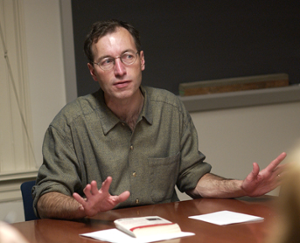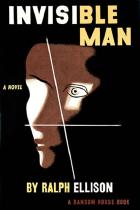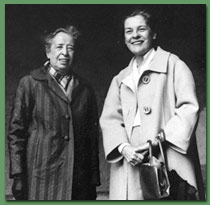New York City in the 1940s - HUMS639Professor: Sean McCannJun 29, 2015 - July 31, 2015
|
 |
Course Overview
“New York city in the 1940s was the pivotal moment in the creation of postwar American culture…like 18th century Edinburgh it was ‘crowded with genius.' We will be examining paintings, music, theater, and film alongside the literature. This is a truly interdisciplinary approach to literary study.”
-
This course will consider the cultural and intellectual life of the Big Apple in the years during and after World War II. Our main focus will be on the fiction, poetry, and drama that contributed to the decade's literary renaissance. But we'll read that material in the context of contemporaneous developments in painting, photography, film, and music, as well as in the era's prominent theories of culture and society. We'll discuss the social and political factors that made New York a vibrant cultural center during the '40s and a bellwether of the developments that would transform the United States in the decades after World War II.
ONLINE OPTION! A limited number of students will be able to take this course online! (Synchronous only, during listed class times). For more information, please call 860-685-3345 or email to sripa@wesleyan.edu.
- Click for assigned reading list
All assigned books are on order at Broad Street Books and, with the exception of Highsmith, are held at Olin Library Reserve. Alternative Editions are acceptable.
Ellison, Ralph, Invisible Man (Vintage 0679732764)
Fearing, Kenneth, the Big Clock (NYRB 1590171810)
Hersey, John, Hiroshima (Vintage 0679721037)
Highsmith, Patricia, Strangers on a Train (Norton 0393321983)
McCarthy, Mary, The Company She Keeps
Miller, Henry, All My Sons (Penguin 0141189975)
Petry, Ann, The Street (Mariner 0395901499)
Salinger, J. D., Nine Stories (Back Bay 9780316767729)
Smith, Betty, A Tree Grows in Brooklyn (HarperPerennial 0061120073)
Williams, Tennessee, Streetcar Named Desire (New Directions 0811216020)

Supplemental texts available via Moodle (m)
- Requirements
More complete descriptions of the assignments can be found on the course Moodle site.
- Two response papers, 3-5 pp. each; sign up for dates on Moodle wiki; (40% of final grade)
- A final essay, 10-15 pp. (50% of final grade), which can be completed in either of two ways:
- A critical and synthetic essay on any three works included in the course syllabus; no more than one of these works can be drawn from subjects treated in your response papers; at least one must come from works listed as “recommended”;
- An original research essay on any aspect of the cultural life of New York City in the 1940s.
- Class participation (10% of final grade).

- Click here for a detailed class schedule
6/30
E.B White, “Here is New York” (m)
Alfred Kazin, “From the Subway to the Synagogue,” A Walker in the City (m) (read whole chapter, or first 14 pp.)
Anatole Broyard, When Kafka Was the Rage, chap 1 (m)Recommended:
Naked City, dir. Jules Dassin (1948)
On the Town, dir. Stanley Donen, MGM (1949)
Jan Morris, “On Class,” Manhattan ’45 (m)
George J. Lankevich, American Metropolis: A History of New York, chs. 8 and 9 (m)
Francois Weil, A History of New York, ch. 9 (m)7/2
Betty Smith, A Tree Grows in Brooklyn
Walker Evans photographs from Many Are Called (available via Art Library reserve and Google book)
Weegee photographs, available in Weegee and the Naked City, on reserve at Art Library, and in Weegee’s World (http://museum.icp.org/museum/collections/special/weegee/)Recommended:
Body and Soul, dir. Robert Rossen, Enterprise Productions (1947)
Paul Robeson, “Ballad for Americans,” available via YouTube
Andreas Feininger, New York in the 1940s, available via Art Library Reserve and in selections via Eastman House Archive http://www.geh.org/fm/feininger/htmlsrc/feininger_sld00001.html7/7
Ann Petry, The Street
Recommended:
Joanne Reitano, The Restless City: A Short History of New York from Colonial Times to the Present, ch. 7 (m)
Cheryl, Greenberg, “Mean Streets,” Or Does it Explode: Black Harlem in the Great Depression (m)7/9
John Hersey, Hiroshima
Siegfried Giedion, “Space-Time in City Planning,” Space, Time, and Architecture: The Growth of a New Tradition (m)
Mary McCarthy, "The Hiroshima 'New Yorker'," Politics, Oct. 1946 (m)Recommended:
Robert Moses, “Haussman,” Architectural Forum (July 1942), 57-66 (m)
Marshall Berman, “Robert Moses: The Expressway World,” All that is Solid Melts Into Air: The Experience of Modernity (s)
The Quiet One, dir. Sidney Myer (with Clifford Agee, Helen Levitt, Janice Loeb) (1948), available via Internet Archive (http://www.archive.org/details/the_quiet_one)7/14
Patricia Highsmith, Strangers on a Train
J. D. Salinger, Nine StoriesRecommended:
Rope, dir. Alfred Hitchcock, Transatlantic, Warner Bros. (1948)
Hannah Arendt, The Origins of Totalitarianism, ch. 13 (m)7/16
Mary McCarthy, The Company She Keeps
W. H. Auden, “Spain,” “September 1, 1939,” “In Memory of W. B. Yeats,” “Under Which Lyre”Recommended:
Leonard Bernstein, Symphony No. 2 “The Age of Anxiety,” available via YouTube
Reinhold Niebuhr, The Irony of American History, chs. 1 and 8 (m)
Arthur Schlesinger, Jr., “Not Left, Not Right, But a Vital Center,” New York Times Magazine, April 4, 1948 (m)
Alan Brinkley, “World War II and American Liberalism” (m)
William Graebner, The Age of Doubt, ch. 1 (m)
Laura, dir. Otto Preminger, 20th Century Fox (1944)7/21
Arthur Miller, All My Sons
Tennessee Williams, A Streetcar Named Desire
Adolph Gottlieb and Mark Rothko, excerpt from “Painting in New York” and other selections (Motherwell, Newman, Pollock, Rothko, Greenberg from Reading Abstract Expressionism)(m)
Jackson Pollock, “The She-Wolf” (1943), “One: Number 31, 1950” (1950)
Clyfford Still, “1944-N No.2 (1944)
Barnett Newman, “Vir Heroicus Sublimus” (1950)
Willem deKoonig, “Woman, 1” (1950-52)Recommended:
Ethan Morrden, All that Glittered: The Golden Age of Drama on Broadway, 1919-1959, chs. 11 and 12 (m)
A Streetcar Named Desire, dir. Elia Kazan, Warner Bros. (1951)
Erika Doss, “The Art of Cultural Politics: From Regionalism to Abstract Expressionism,” Recasting America, ed. Lary May (m)7/23
Kenneth Fearing, The Big Clock
Ralph Ellison, Invisible Man, through chap 7
C. Wright Mills, White Collar, introduction, chs. 5 and 7 (m)Recommended:
Phantom Lady, dir. Robert Siodmak, Universal (1944)
David Reid and Jayne L. Walker, “Strange Pursuit: Cornell Woolrich and the Abandoned City of the 1940s,” Shades of Noir, ed. Joan Copjec (m)7/28
Ellison, Invisible Man, through chap 14
On Bird, Bird-Watching, and Jazz” (m)
Duke Ellington, “C Jam Blues” (http://www.youtube.com/watch?v=gOlpcJhNyDI&feature=related)
Ellington, “It Don’t Mean a Thing” (http://www.youtube.com/watch?v=qDQpZT3GhDg&feature=related)
Ellington, “Mood Indigo” (http://www.youtube.com/watch?v=Ez-ljQA2Kn8&feature=related)
Count Basie Orchestra, “One O’Clock Jump” (http://www.youtube.com/watch?v=GQi4jglT0Vo&feature=related)
“Jumpin’ at the Woodside,” from Hellzapoppin’, dir. H. C. Potter, Universal (1941) (http://www.youtube.com/watch?v=GQi4jglT0Vo&feature=related)
Dizzy Gillespie Orchestra, “Salt Peanuts” (http://www.youtube.com/watch?v=kOmA8LOw258)
Charlie Parker and Dizzy Gillespie, “Hot House” (http://www.youtube.com/watch?v=Clp9AeBdgL0&feature=related)
Charlie Parker, Coleman Hawkins et al., “Ballade,” etc. (http://www.youtube.com/watch?v=mZ5eGEest0g&feature=related)Recommended:
William P. Gottlieb collection of photographs from the golden age of jazz, Library of Congress, http://memory.loc.gov/ammem/wghtml/wghome.html
Lewis Erenberg, “Things to Come: Swing Bands, Bebop, and the Rise of a Postwar Jazz Scene,” Recasting America, ed. May (m)
Scott DeVeaux, The Birth of Bebop, introduction, ch. 6 (m)7/30
Ellison, Invisible Man, through conclusion
Ellison, “Harlem is Nowhere” (m)
Gordon Parks, “Harlem Gang Leader,” Life (November 1, 1948) (available in Google Book)Recommended:
Christopher Z. Hobson, “Invisible Man and African-American Radicalism in World War II,” African American Review (Fall, 2005), available via JSTOR8/10 Final paper due









